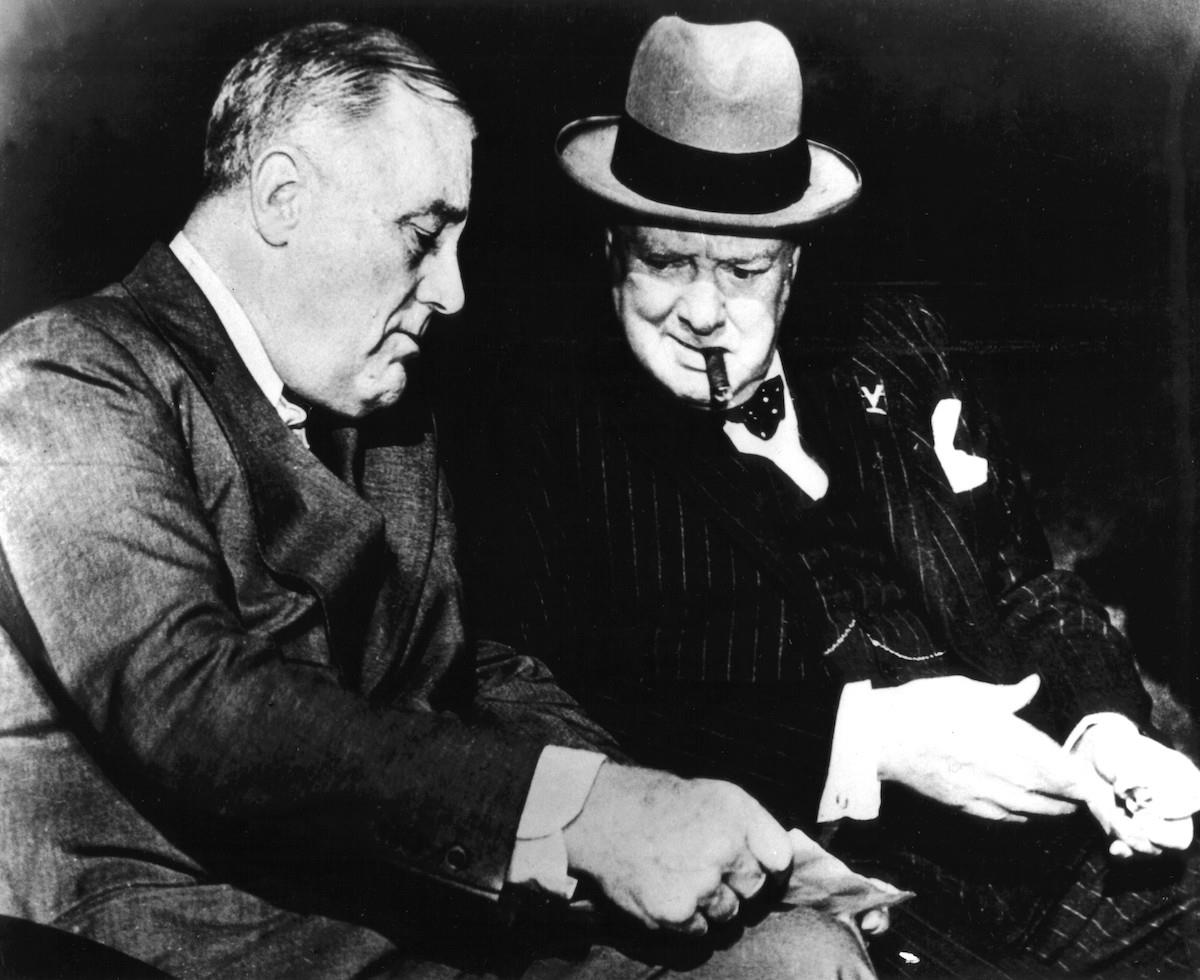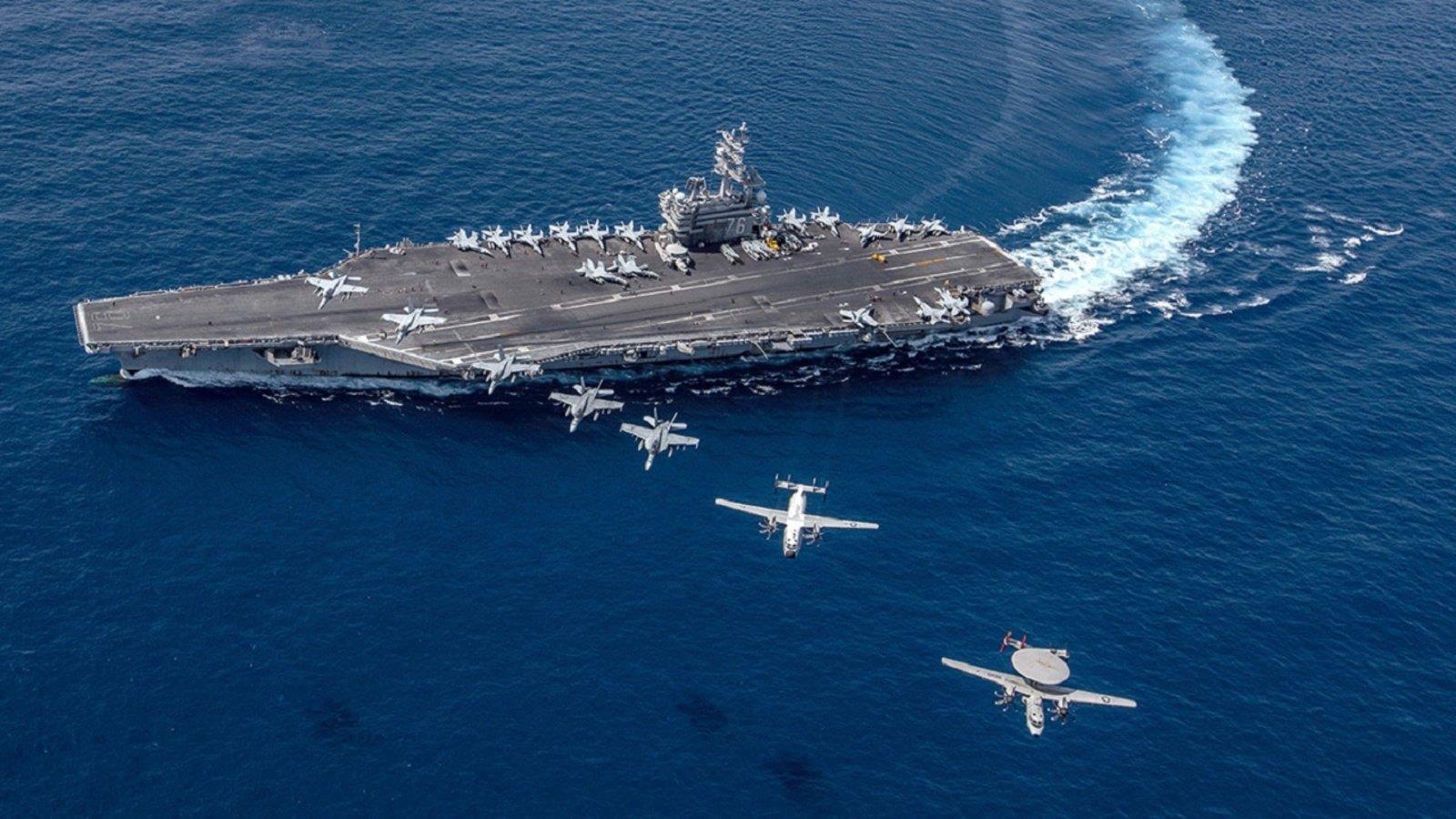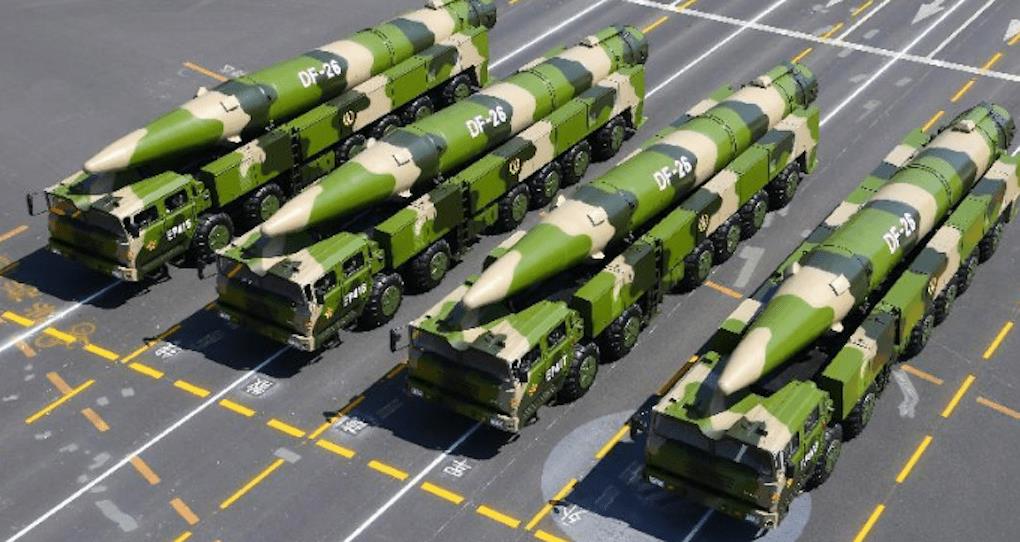(MENAFN- Asia Times)
“What would Winston Churchill say?,” protested China hawk Michael Pillsbury when Michael Anton, a former national security official in the Trump administration, asked him what he would do if China sank a US aircraft carrier. I reported the exchange in a November 3 analysis,“Sleepwalkers in the South China Sea .”
More relevant is what Churchill actually said just before the war. Like most of the Allied leadership, Churchill refused to believe that Germany could bypass France's Maginot Line, or that the Japanese could roll up British forces in Asia in a matter of weeks. Hitler and Hirohito both threw the British into the sea, respectively at Dunkirk and Singapore.
With 350 intermediate-range missile launchers and DF-21 and DF-26 ship-killer missiles, China can sink American carriers as surely as Japanese torpedo bombers sank Allied battleships in World War II.
Allied leaders refused to believe that battleships were sitting ducks. Churchill and his cabinet were mental giants compared to the counterinsurgency soldiers who now lead the American military, but they got it terribly wrong. The Americans now may do worse.
America's Navy, predictably, wants more aircraft carriers.“When we think about how we might fight, it's a large water space, and four aircraft carriers is a good number, but six, seven or eight would be better,” Seventh Fleet commander Admiral Karl Thomas said on November 30 after exercises in the Pacific.
Not a replacement for the aging Aegis anti-missile system that can't protect American ships from Chinese missiles dropping from the stratosphere at Mach 10; not a space-based anti-ballistic missile system that could intercept such projectiles at launch; not a defense against Chinese and Russian hypersonic glide vehicles that can evade all existing anti-missile systems; not an alternative to American GPS and communications satellites, which Chinese or Russian lasers and missiles could disable in a matter of hours. Admiral Thomas wants more of the same century-old weapons platform that the Chinese have spent billions learning how to sink.
The idea is Churchillian, to be sure, but that is not necessarily a recommendation.
Just before Japanese aircraft sank the Prince of Wales and the Repulse in December 1941, Churchill averred that the Japanese“would fold up like the Italians,” because they were“the wops of Asia.” He believed in the battleship until Japanese aircraft sank the Prince of Wales and Repulse in December 1941.
Churchill championed two-seater fighters with heavy gun turrets rather than the agile Spitfire, in the mistaken (but then prevalent) belief that German fighters lacked the range to attack England. Churchill in 1939 also doubted that tanks would play an important role in the next war, and dismissed airpower as“an additional complication rather than a decisive weapon,” as his biographer Andrew Roberts recounts.
He was outfoxed in almost every detail, but like Archilochus' hedgehog, Churchill knew one big thing: America would rise to Britain's defense. As Roberts argues persuasively, it would not have done so had Hitler not blundered by declaring war on the United States after Pearl Harbor.

Franklin Roosevelt and Winston Churchill
in 1943 in Morocco during World War II. Photo: AFP
It is unfair to blame Churchill, to be sure. He repeated the misconceptions of the military leaders of his time. Not just Churchill but the whole of the Allied leadership misjudged the course of the coming war.
The American Navy built battleships and stinted on aircraft carriers, despite Admiral Harry Yarnell's demonstration in 1932 war games that carrier-based aircraft could devastate Pearl Harbor.
Vice-Admiral Ernest King repeated the exercise in 1938. The Navy didn't believe him, either. Later President Roosevelt would make King chief of naval operations. As Thomas Fleming wrote in American Heritage :
At nightfall on February 6, 1932, Yarnell's Blue task force was plowing through heavy seas 60 miles northeast of Oahu. The ships were running with no lights, under absolute radio silence. In the predawn murk on February 7, with the seas still mountainous, Yarnell launched 152 planes from the Saratoga and the Lexington. It was a daring gamble, sending the biplanes of the day aloft from the bucking, rolling carriers. But not a plane was lost.
An hour later, Yarnell's fliers came out of the clouds shrouding the Koolau Range, and there lay Pearl Harbor below them in the sunshine, getting ready for a peaceful Sunday. Yarnell's fighters“strafed” lines of planes parked on runways, while his dive-bombers dumped 20 tons of theoretical explosives on air fields, ships in the anchorage, and Army headquarters at Fort Shatter. Not a single fighter rose to oppose them.
The British Admiralty wore the same blinders. Without air cover, British Admiral Sir Tom Phillips led the Prince of Wales and the Repulse into a Japanese trap in December 1941, ignorant of the capabilities of Japan's torpedo bombers.
He went down with his ship, and Britain's hundred-year hegemony in Asian seas ended in a single engagement. Ironically, the appeaser Joseph Chamberlain backed the Spitfire, which contributed mightily to Britain's survival during the air war of 1940.
As the historian and strategist Edward Luttwak observed, military leaders usually are the wrong people to conduct the war in which they find themselves. The branch of military service that produced the largest number of commanding generals in World War I, Luttwak notes, was the aristocratic cavalry, the least relevant to the battle conditions of 1914.
For the past 20 years, the United States military devoted the bulk of its efforts and $6 trillion dollars to counterinsurgency and nation-building in Iraq and Afghanistan, with disastrous results. The whole of the American senior officer corps, that is, was promoted for doing the wrong things.
America was wrong-footed in 1941, and the Navy's faith in the battleship burnt to a crisp at Pearl Harbor. But America was big enough to take the blow and come back.
Its gross domestic product (GDP) in 1942 was US$1.24 trillion, fully six times Japan's GDP of $197 billion (in 1990 US dollars). By 1944, it rose to $1.5 trillion as America mobilized resources idled by the Great Depression and invested massively in new industrial plants. When Japan attacked Pearl Harbor, the US had 3 aircraft carriers. By 1945 it had 105 aircraft carriers, including 41 large fleet carriers.
Today, China has a GDP of $26.7 trillion in terms of purchasing power parity (which is what counts in military depth), versus a US GDP of $22.7 trillion. But GDP is a misleading measure of relative strength in wartime.

Multiple aircraft fly in formation over the USS Ronald Reagan, a US Navy aircraft carrier in the South China Sea. Photo: Kaila V Peters / US Navy
China's manufacturing output is much larger than that of the United States, at 29% of world capacity versus 17% for America. The US was big enough to bail Britain out after the blunders of the first two years of World War II. There is no-one to bail out the United States if it loses a fleet carrier in a military engagement with China.
The efficacy of China's surface-to-ship missiles is well known, and so is China's anti-satellite capability. The range of China's missiles far exceeds the range of US carrier-based aircraft, which means that in a conflict US carriers could not get close enough to China's coast to launch aircraft attacks on the mainland.
How the US and China measure up in terms of high-tech warfighting, for example cyberwar, is impossible to know. But what is known is that the US military depends on GPS and communications satellites that are vulnerable to Chinese missiles and ground-based lasers, and there is no reason to believe that any American satellites would survive the first hours of a war.
Without satellites, US forces in the Pacific would be blind, deaf and dumb. China can maintain surveillance and communications on its own coast with high-altitude balloons connected to the ground by coaxial cable.
Everyone in the US defense establishment knows this, just as everyone in the US Navy knew that Japanese carriers could destroy ships docked at Pearl Harbor when Admirals Yarnell and King proved it in 1932 and 1938.
To admit that the battleship was destined for the scrapheap in 1938, though, would be to concede that the US had built the wrong sort of navy for the wrong sort of war. To admit that the United States can't win a war with China close to China's coast, however, would be to concede that for the past 20 years the US has squandered its resources on the wrong sort of military.
Old friends who otherwise seem perfectly lucid appear to fall into a trance when these facts are presented. They know all of this is true but they aren't allowed to say so. Like most entrenched institutions, the US military and its adjuncts, the think tanks and university research institutions, form a fraternity that protects its own credibility.
That also explains why the US Navy had nine battleships in December 1941 and just three aircraft carriers, and also why the Navy today wants more aircraft carriers, that is, sitting ducks.

The 20th annual report on China by DoD noted the“staggering” improvements in China's ability to build, coordinate and project power since the first report was issued. Credit: FAS Handout.
There is another and more ominous difference between Japan in 1941 and China in 2021. China has 300 nuclear weapons, mostly city-busters, and the ICBMs and possibly hypersonic vehicles to deliver them. Japan couldn't threaten the American homeland; China could annihilate it.
A naval exchange near China's coast could lead to a nuclear exchange, as former Pacific Fleet commander James Stavridis explains in his 2021 thriller 2034.
Instead, the United States should go back to the drawing board and the frontier of physics, and concentrate on missile defense, alternatives to satellite location and communications, and applications of artificial intelligence—the technologies that will decide the victor in any future war.
MENAFN06122021000159011032ID1103309740